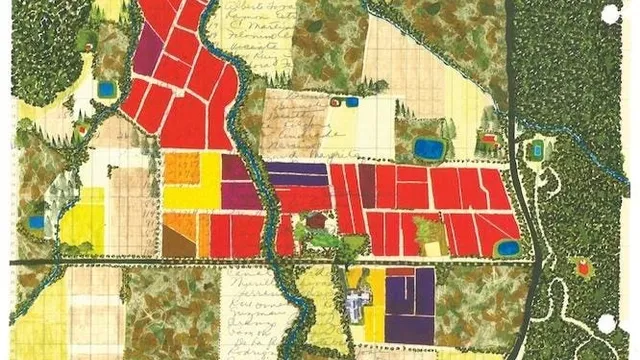
Sauvignon Blanc evolves with diverse styles in the U.S. and Europe
2025-04-18 00:00- Sauvignon Blanc has gained renewed interest with varying styles emerging in American and European vineyards.
- Some Bordeaux Sauvignon Blanc wines have begun to command prices above $50, marking a shift in market trends.
- The evolution and diversity of Sauvignon Blanc reflect changing consumer preferences and are encouraging exploration among wine enthusiasts.
Express your sentiment!
Insights
Sauvignon Blanc, often referred to as 'SB', has long held a significant role in viticulture across various regions, especially in France. It serves as the foundation for prestigious Bordeaux wines including Sancerre, Pouilly-Fumé, Sauternes, and Barsac. A noteworthy trend is emerging where certain Bordeaux wines have started to command prices surpassing $50, marking a change in the market dynamics for these wines. For example, the Arkenstone Estate Blanc 2022 was priced at $125 and sold out quickly, indicating strong demand for high-quality SB. Meanwhile, European vineyards showcase impressive examples of SB, such as the Sattlerhof Winery 2023, which is recognized for its long aging potential and character, displaying a 13% alcohol content. Other vineyards like Somerson Estate in Napa Valley have also taken an innovative approach, with their SB exemplifying a higher alcohol content of 14.3%, contributing to a fuller body that appeals to modern consumers. These wines are not only popular but are often crafted with care to ensure they can be enjoyed over time. California's wine regions are pushing the boundaries of SB production. Notably, Larkmead's vineyard paints a picture of terroir with its conditions resulting from temperature swings, enhancing the quality of the grapes. Similarly, J. de Villebois 2023 offers a refreshing palate at 12.5% alcohol, marking a shift towards more approachable SBs. The evolving profile of SB reflects a departure from past patterns, as producers aim for balance and artistry in creation. As highlighted, the emergence of SB diversity points towards a broader appreciation and acceptance of varied styles, paralleling trends seen in wines like Chardonnay. This evolution in SB production highlights a remarkable transition, encouraging wine enthusiasts to explore and embrace the rich spectrum of flavors and styles now available in both American and European markets.
Contexts
Sauvignon Blanc, a variety of white grape originating from the Bordeaux region of France, has seen a notable evolution in its production trends over the past few years. As of April 2025, the production of Sauvignon Blanc is characterized by a greater diversity of growing regions, innovative winemaking practices, and an increasing emphasis on sustainability. Regions such as New Zealand, California, and South Africa have solidified their reputations as prominent producers, contributing to a global increase in Sauvignon Blanc's popularity. In New Zealand, the Marlborough region continues to define the style of modern Sauvignon Blanc, characterized by vibrant acidity and pronounced tropical and citrus fruit flavors. However, winemakers are also exploring and emphasizing terroir-specific characteristics, allowing for a broader range of styles to emerge. This trend can lead to distinctive offerings that appeal to a wider consumer base and elevate the overall quality of the wine produced. Additionally, winemaking techniques have evolved, with producers embracing a variety of approaches to enhance the sensory qualities of Sauvignon Blanc. Traditional fermentation methods are being complemented by the use of wild or indigenous yeasts, which can impart unique flavors and complexity. In particular, there is a growing tendency to utilize oak aging, previously less common in Sauvignon Blanc production, to add depth and texture to the wine. Some winemakers are also experimenting with skin contact, particularly in the production of natural and orange wines, which appeals to a niche market segment. Such innovations not only broaden the varietal's appeal but also foster consumer interest in new and varied expressions of Sauvignon Blanc. The trend toward sustainability is significantly shaping the production of Sauvignon Blanc as well. Many vineyards are adopting organic and biodynamic practices to reduce their environmental impact and produce wines that are more in harmony with nature. The movement towards environmentally-friendly viticulture is driven by consumer demand for sustainability in wine production, reflecting a broader global shift towards more responsible agricultural practices. Certifications such as Organic or Biodynamic farming are becoming more sought after, allowing producers to differentiate their offerings in a competitive marketplace. Furthermore, producers are increasingly focusing on a reduced carbon footprint through various initiatives, such as using lighter glass bottles and implementing energy-efficient practices in winemaking. As the Sauvignon Blanc landscape continues to evolve, it is evident that trends in production reflect not only changing consumer preferences but also a deeper understanding of the grape's potential across different regions and production methods. Looking forward, it can be anticipated that the diversity of styles will continue to expand, as winemakers respond to both challenges and opportunities presented by climate change and increasing market demands. This dynamic environment is likely to foster innovations and collaborations, ultimately contributing to the sustained growth and popularity of Sauvignon Blanc on the global wine stage.